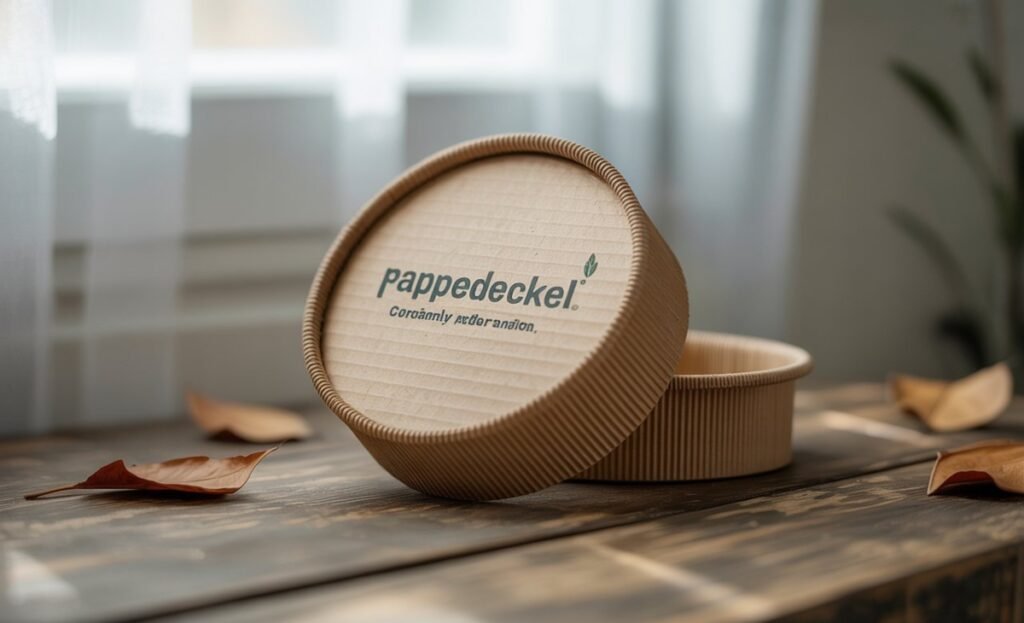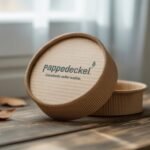At first glance, the Pappedeckel might seem like an ordinary cardboard lid—simple, lightweight, and easy to overlook. Yet, this modest invention has become a powerful symbol of how small choices can make a big difference for the planet. Businesses, artisans, and eco-conscious consumers are increasingly embracing the Pappedeckel as a practical, sustainable alternative to plastic lids.
It’s more than just a lid; it’s an idea—an idea that sustainability doesn’t have to compromise convenience, functionality, or design. Whether sealing food containers, enhancing branding, or fueling DIY creativity, the Pappedeckel demonstrates how innovation often lies in simplicity.
What Exactly Is a Pappedeckel?
The Pappedeckel is essentially a lid made from sturdy cardboard, designed to cover jars, cups, and other containers. Despite its lightweight feel, it provides a strong barrier against dust, moisture, and contamination. Available in multiple sizes and shapes, these lids adapt seamlessly to different industries, from restaurants and cafés to artisan shops and even craft studios.
What makes it stand out is its eco-friendly foundation. Instead of relying on non-biodegradable plastics, it uses renewable and recyclable materials. The result is a practical, sustainable lid that feels at home in both modern kitchens and environmentally conscious businesses.
The Origins of Pappedeckel
The story of the Pappedeckel begins in Germany, where packaging innovation has long been tied to environmental awareness. Introduced as an alternative to single-use plastics in the late 20th century, the Pappedeckel quickly earned a reputation for balancing durability with eco-friendliness.
Its rise coincided with growing concerns about plastic pollution, making it not just a product but a solution. By offering businesses a reliable yet sustainable option, the Pappedeckel captured attention across Europe and has since expanded to global markets.
Materials That Make a Difference
The true strength of it lies in its materials. High-quality cardboard, often sourced from recycled fibers, forms the base. Many manufacturers also enhance lids with biodegradable coatings to protect against moisture, grease, or spills—without compromising recyclability.
Eco-friendly inks are another feature, ensuring that branding or decorative designs remain safe for both consumers and the environment. This thoughtful use of sustainable materials not only supports functionality but also reflects a broader movement towards responsible consumption.
Everyday Applications of Pappedeckel
It has carved out a niche in multiple industries thanks to its versatility. In the food and beverage sector, it’s often used to seal soups, sauces, and takeaway meals. Cafés and restaurants appreciate how it preserves freshness while keeping packaging costs down.
But its role doesn’t end there. In the crafting community, creative individuals transform Pappedeckel into canvases for painting, scrapbooking, or DIY décor projects. Its flat, sturdy design makes it perfect for imaginative repurposing, turning what could have been waste into art.
Even households find uses for these lids—covering jars of homemade jam, preserving spices, or acting as impromptu coasters at a dinner party.
Why the Food and Beverage Industry Loves Pappedeckel
Restaurants and cafés are under growing pressure to reduce their plastic footprint. It offers a simple yet powerful way to achieve this. By replacing plastic lids with cardboard alternatives, businesses can reduce waste without sacrificing convenience or hygiene.
Moreover, branding opportunities abound. A printed logo or artistic design on a Pappedeckel not only elevates the customer experience but also reinforces eco-conscious values. Imagine receiving your morning coffee topped with a recyclable lid that proudly communicates a café’s commitment to sustainability—that’s both smart marketing and responsible practice.
The Benefits of Choosing Pappedeckel
The advantages of Pappedeckel go far beyond practicality:
- Eco-friendliness: Made from renewable and recyclable resources.
- Lightweight durability: Strong enough to protect contents while easy to transport.
- Cost-effectiveness: Reduces shipping costs due to lower weight.
- Consumer appeal: Eco-conscious buyers increasingly prefer brands using sustainable packaging.
It’s no wonder businesses and consumers alike are turning to this small yet impactful solution.
Environmental Impact of Pappedeckel
Plastic lids can linger in landfills for centuries, while a Pappedeckel naturally biodegrades within months. Its life cycle—from production to disposal—leaves a much lighter environmental footprint. By switching to Pappedeckel, businesses reduce carbon emissions, contribute to circular economies, and align themselves with growing environmental regulations.
On a larger scale, widespread adoption of such alternatives demonstrates how incremental changes in packaging can significantly reduce global waste.
Creative and Decorative Uses
The Pappedeckel’s charm isn’t limited to packaging. In creative hands, it becomes a tool for expression. At weddings, Pappedeckel lids can serve as rustic place cards. At home, they double as coasters or mini-canvases for children’s art projects.
DIY enthusiasts value their affordability and versatility, turning them into decorative pieces, collages, or even ornaments. This adaptability proves that sustainability and creativity can coexist beautifully.
How Pappedeckel Is Made
Manufacturing Pappedeckel is straightforward but meticulous. It begins with responsibly sourced cardboard, which is cut into precise dimensions. Eco-friendly adhesives and coatings are applied where necessary to strengthen the lid without compromising recyclability.
Finally, precision machinery presses the cardboard into its final shape, ensuring a snug fit for containers. The result: a lightweight yet durable product ready for mass use, built on a foundation of sustainability.
Recycling and Sustainability
One of the strongest selling points of Pappedeckel is its recyclability. After use, it can be returned to the recycling stream, supporting circular economies. Manufacturers further enhance sustainability by adopting energy-efficient production methods and using recycled raw materials.
For eco-conscious consumers, choosing products packaged with Pappedeckel feels like an active step toward reducing environmental harm. It’s a win-win: functional for daily use, and responsible for the planet.
Design Trends in Pappedeckel
What was once a plain, brown lid has evolved into a design-friendly product. Businesses now customize Pappedeckel with vibrant prints, minimalist branding, or quirky artwork. Some even use biodegradable metallic finishes to stand out on store shelves.
These design trends elevate Pappedeckel from a simple lid into a brand storyteller, giving businesses another avenue to connect with their customers while staying eco-friendly.
Cultural Uses Around the World
Though it started in Germany, the Pappedeckel has found a place in cultures worldwide. In Europe, it’s a staple for artisanal foods like cheeses, jams, and baked goods. In Asia, it’s commonly used for loose-leaf teas and spice packaging, aligning with traditional values of natural simplicity.
This cultural flexibility proves that sustainability isn’t bound by geography—it’s a global language, and Pappedeckel speaks it fluently.
The Bottom Line
The Pappedeckel may be small in size, but its contribution to sustainability and innovation is massive. It offers businesses a cost-effective way to reduce waste, provides consumers with eco-friendly choices, and inspires creatives with endless possibilities.
It embodies the idea that even the simplest products can drive meaningful change. By choosing it, you’re not just covering a container—you’re supporting a more sustainable, creative, and responsible way of living.
FAQs About Pappedeckel
What is a Pappedeckel used for?
It’s primarily used as an eco-friendly cardboard lid for containers, often in food and beverage packaging.
Is it safe for food contact?
Yes, it is made from food-safe materials, often with biodegradable coatings.
Can Pappedeckel be recycled?
Absolutely. Most Pappedeckel products are 100% recyclable and biodegradable.
Is it only for businesses?
No, it’s also popular among crafters, DIY enthusiasts, and households for creative or practical use.
Where can I buy Pappedeckel?
They are available through packaging suppliers, eco-friendly retailers, and some artisanal markets.
What makes Pappedeckel better than plastic lids?
Its sustainable materials, biodegradability, and lower environmental footprint make it a smarter, greener choice.






